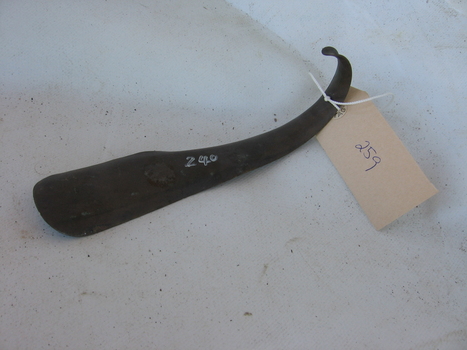Historical information
Shoehorns have been used for centuries, with early versions crafted from bone, wood, or metal.
This design suggests it may be from the late 19th to early 20th century, when metal shoehorns became more common.
The curved hook handle could indicate it was designed for use in a retail shoe store, a bootmaker’s shop, or as a household item.
Shoehorns were particularly useful for wearing tightly fitted leather shoes or boots, helping preserve their shape and preventing damage.
The patina and wear suggest long-term use, possibly in a workshop, household, or professional setting.
Physical description
This is a curved metal shoehorn, used to assist in putting on shoes without damaging the heel or crushing the back of the shoe.
The blade is broad and flat, tapering slightly towards the end for ease of insertion into the shoe.
The handle curves upward into a hook shape, likely for hanging storage or to provide a better grip when in use.
The surface is darkened and aged, with visible patina and signs of wear, indicating significant age and use.
Owned by V EMMETT of Natimuk

